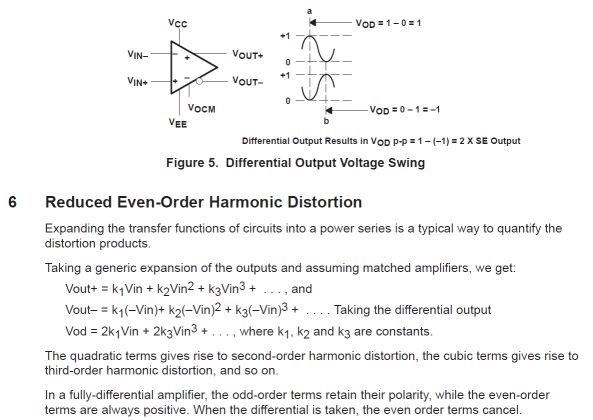I agree, but otoh I can easily make the argument that single ended designs preserve fine detail and microdynamics as well...

No more so than a differential design but whatever. Fundamentally, for audio, I doubt anyone would know if there were using differential or single-ended circuits in the majority of installations. No point in debating what people hear because it is almost impossible to get a direct comparison of differential to single-ended designs without some other variable changing. For that matter, most audio circuits I have seen utilize both single-ended and differential circuits "inside the box".
***
Ron, throw out the cables, they just convey the signal from one component to another. Consider them ideal, perfect, flawless transmitters from one point to another. Now consider a perfect recording and reproduction chain, only difference being differential vs. single-ended. At the start, the microphone picks up the voice or instrument (I'll ignore direct-plug instruments for now) in all of its (good lord I hope I used the right "its"

) glory, including the full harmonic content (even, odd, and non-harmonic). Apply that perfectly-captured signal to the amplifier chain from mic preamp to speaker outputs. All those electronics will add their own noise and distortion to that perfect source. If the circuits are all single-ended, then the second harmonic will usually be dominant, and there will be both even and odd order harmonics added to the source. If the chain is differential, and let's (oh crud, another apostrophe) say it is perfectly differential so all even-order distortion is suppressed, then the third harmonic will normally be dominant and no even-order distortion will be added to our perfect source. Clearly, I hope, the differential circuit is thus closer to the source, to "perfection" if you will.
Now, what I think you are postulating, is that the added distortion from a single-ended design makes the final sound better. That is possible. To use a (very) gross analogy, a perfect square wave has only odd harmonics, and sounds like a raspy buzz to us. Add in even-order harmonics, the edges of the steps are more rounded, and the sound becomes less raspy and thus "better" to us. It is more distorted, but we may prefer that sound, even knowing it is less true to the source (less "perfect"). That is one reason I like the sound of my old tube gear even though I know it is the extra distortion (among other things) giving me that bit of "false euphoria" (again going to extremes). It is not as true to the source, but sounds better to me.
The big caveat in all of this is that the distortion is so low in modern electronics, at least until the power amps start clipping, that the lower distortion argument for differential circuits is moot in the real world. The advantages of differential circuits in audio are primarily noise rejection and isolation, from within the box (e.g. power supply noise, crosstalk) and without (EMI/RFI). By far the greatest source of distortion in the vast majority of audio systems, at least IME/IMO, comes from the speakers.
HTH - Don


















